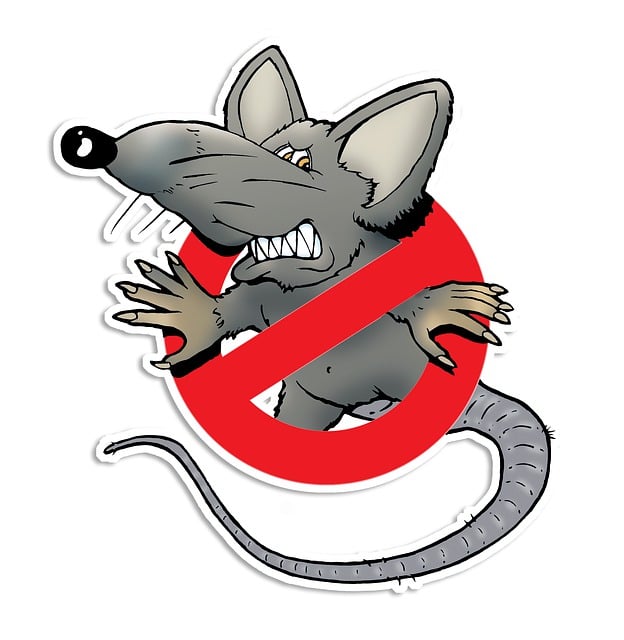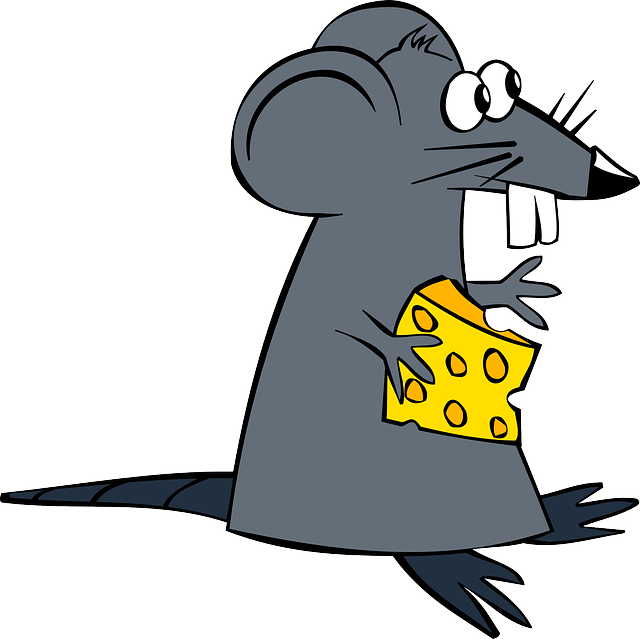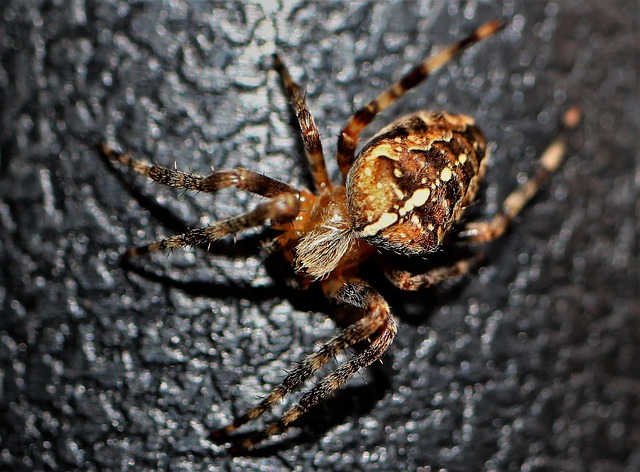Commercial rodent control is a specialized service addressing and preventing infestations of rats and mice in office buildings, retail stores, and industrial facilities. It involves strategic approaches like identifying entry points, using exclusion methods, deploying baits and traps, maintaining clean environments, and conducting regular inspections for early detection. Professionals utilize advanced techniques, consider environmental factors, and implement targeted plans to disrupt rodent presence and prevent future infestations, minimizing damage and hazards. Effective control requires understanding rodent behaviors, implementing multi-layered prevention strategies, and adopting environmentally friendly methods like non-toxic traps, ultrasonic devices, and natural predators. Post-treatment, maintaining a clean environment and sealing entry points are key to preventing reinfestation. Adhering to legal guidelines and industry standards ensures safe and responsible pest management while upholding ethical standards.
In commercial settings, effective rodent control is paramount to maintain hygiene, prevent damage, and ensure a safe working environment. This comprehensive guide delves into the essentials of commercial rodent control, covering everything from understanding basic concepts to advanced strategies. We explore common rodent species, signs of infestation, prevention tactics, non-toxic management options, traditional pesticide use, professional services, post-treatment care, legal considerations, and industry standards. By mastering these aspects, businesses can implement robust rodent control measures.
Understanding Commercial Rodent Control: The Basics

Commercial rodent control is a specialized service designed to manage and eliminate rodent infestations in commercial spaces, such as office buildings, retail stores, and industrial facilities. It goes beyond simple pest management, focusing on preventing and eradicating rodents like rats and mice that can cause significant damage to properties and pose health risks. This process involves a combination of strategies, including identifying entry points, implementing exclusion methods, using baits and traps, and maintaining clean environments.
Professionals in commercial rodent control employ advanced techniques tailored to each unique setting. They assess the scope of the infestation, consider environmental factors, and design targeted plans. Regular inspections are crucial to detect early signs of rodent activity, ensuring prompt action. By combining these methods, commercial rodent control offers a comprehensive solution, safeguarding businesses from the potential losses and hazards associated with rodents.
Common Rodent Species in Commercial Settings

In commercial settings, several common rodent species can pose significant challenges for pest control professionals. Rats and mice are the most prevalent, with their exceptional adaptability making them hard to eradicate. These rodents are skilled navigators, able to squeeze through tiny gaps and access hidden spaces, making them a persistent problem in warehouses, offices, and restaurants. Their high reproduction rates exacerbate the issue, as even a small infestation can swiftly turn into a major headache for business owners.
Effective rodent control in commercial environments requires a comprehensive understanding of these species’ behaviors and habitats. Professional exterminators employ various strategies, including setting traps, applying repellents, and sealing entry points, to disrupt their presence and prevent future invasions. Regular inspections are crucial in identifying potential hiding spots and food sources, allowing for swift intervention and minimizing damage caused by these unwelcome visitors.
Identifying Signs of Rodent Infestation

Many commercial spaces often become attractive targets for rodents due to readily available food sources and potential shelter. Identifying an infestation early is crucial for effective rodent control, saving businesses time and money in the long run. Keep an eye out for subtle signs like small droppings near food storage areas or along walls, gnaw marks on packaging or structural elements, and strange odours. Rodents are also known to leave behind fur, feathers, or eggs, which can be easily spotted if you know where to look.
Regular inspections by professionals in rodent control can help spot these indicators early. They have the expertise to navigate labyrinthine spaces, identifying hidden entry points and active nests, and implement tailored strategies for each unique situation. Commercial rodent control services employ a range of methods from traditional traps to more modern, humane alternatives, ensuring that the issue is resolved quickly and effectively.
Prevention Strategies for Effective Rodent Control

Preventing rodent infestations is a key aspect of effective rodent control. Implementing a multi-layered approach that combines several prevention strategies is crucial. Start by maintaining excellent sanitation, eliminating sources of food and water, and securing all entry points into your property with robust barriers. Regularly clean and seal gaps around pipes, wires, and doors to prevent access.
Additionally, keeping landscapes well-trimmed and free of debris reduces hiding spots and potential nesting areas. Store materials like wood, hay, and garbage in secure containers, and avoid leaving pet food unattended. These proactive measures can significantly deter rodents from seeking entry, minimizing the need for extensive rodent control treatments.
Non-Toxic Methods for Commercial Rodent Management

In the realm of commercial rodent control, non-toxic methods have gained prominence as environmentally friendly alternatives. These strategies focus on deterring and eliminating rodents without resorting to harmful chemicals, ensuring a safer workplace for employees and reducing potential ecological impact. One such approach involves the use of physical barriers like sealed entry points, traps designed to capture rather than kill, and ultrasonic devices that emit sound waves unpleasant to rodents but harmless to humans and pets.
Additionally, non-toxic methods include the deployment of natural predators like cats or the strategic placement of plants known to repel rodents. Regular sanitation practices, such as proper waste management and food storage in sealed containers, are also crucial. These measures not only prevent rodent infestation but do so in a manner that respects ecological balance, making them essential components of any comprehensive commercial rodent control plan.
Traditional Pesticide Use in Commercial Settings

In commercial settings, rodent control is a critical aspect of maintaining hygiene and preventing damage. Traditional pesticide use has long been a go-to method for many businesses, offering swift results in eliminating rodent infestations. However, with growing environmental concerns and health risks associated with chemical pesticides, there’s a shift towards more sustainable alternatives.
These traditional methods often involve toxic chemicals that can pose significant risks to employees and customers, especially when not applied correctly. Additionally, rodents can develop resistance to certain pesticides over time, rendering them less effective. As such, many commercial spaces are now exploring integrated pest management (IPM) strategies, which emphasize non-chemical methods like improved sanitation, trap deployment, and exclusion techniques to achieve long-term rodent control.
Professional Services for Commercial Rodent Control

Commercial rodent control is a specialized service that requires expert knowledge and advanced equipment, making professional intervention essential for businesses facing persistent rodent infestations. These professionals employ tailored strategies to address unique commercial settings, from warehouses and office spaces to retail stores and food processing facilities. They understand the importance of minimizing disruption to business operations while ensuring the safety and health of employees and customers.
Professional rodent control services offer a comprehensive approach, including thorough inspections, advanced trapping techniques, and effective repellents. Their expertise lies in identifying rodent entry points, understanding behavior patterns, and implementing long-term solutions to prevent future infestations. By leveraging industry-leading practices and eco-friendly methods, these professionals provide efficient and humane rodent control, contributing to a healthier and more productive work environment.
Post-Treatment Care and Maintenance Tips

After a professional rodent control treatment, maintaining a clean and sealed environment is crucial for preventing future infestations. Regular cleaning routines should be implemented, focusing on removing any food sources or debris that might attract rodents. It’s essential to keep areas free from clutter, ensuring there are no hidden spaces for them to nest.
Maintenance also includes sealing entry points and gaps around pipes, wires, and doors. This step is vital in keeping out new intruders. Regular inspections should be conducted to identify any signs of re-infestation, such as droppings or chewed materials, enabling prompt action. By combining these practices with professional treatment, you can effectively manage and control rodent problems over the long term.
Legal Considerations and Industry Standards

In the realm of commercial rodent control, understanding legal considerations and industry standards is paramount for businesses aiming to maintain a pest-free environment. Compliance with local, state, and federal regulations is not just a moral obligation but also a strategic one. Non-compliance can lead to hefty fines, damage to business reputation, and potential health hazards for customers and employees.
Industry standards dictate best practices that go beyond legal requirements. Professional rodent control services adhere to these guidelines to ensure safe and effective treatments. This includes the use of approved pesticides, proper application techniques, regular monitoring, and transparent communication with stakeholders. By adhering to both legal frameworks and industry benchmarks, businesses can effectively manage rodents while maintaining a responsible and ethical approach to pest control.
